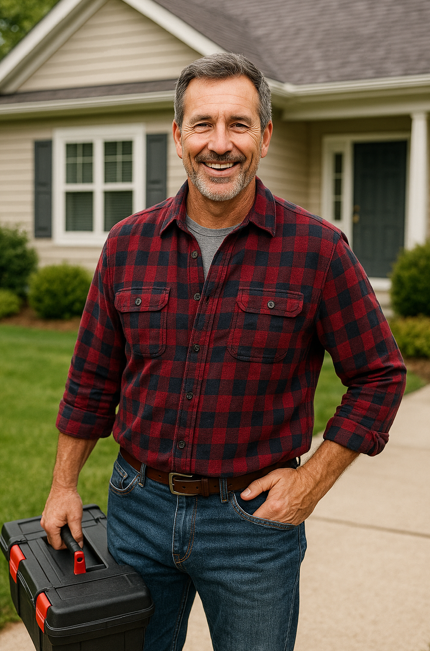Let’s face it—no one wants to spend money on a furnace. But when yours is on its last leg, you’ve got to make a choice: do you stick with a standard 80% model, or shell out more for a 90–98% high-efficiency furnace?
I’m Mike Sanders, and I’m here to walk you through whether those higher AFUE numbers really translate to savings—or if you’re just buying hype.
What Does “High-Efficiency” Mean in Furnace Terms?
A furnace’s AFUE (Annual Fuel Utilization Efficiency) rating tells you how much heat it delivers per dollar of fuel.
-
80% AFUE = 80 cents of every gas dollar turns into heat. The rest vents outside.
-
95% AFUE = 95 cents goes to heating. Less waste, more warmth.
High-efficiency furnaces typically start at 90% and go up to 98% AFUE.
What's the Price Difference?
Here’s a rough cost comparison (before rebates or tax credits):
| Furnace Type | Estimated Cost (Installed) |
|---|---|
| 80% AFUE (Standard) | $2,500 – $3,500 |
| 95%+ AFUE (High-Eff) | $3,500 – $5,500 |
Yes, you’ll pay $1,000–$2,000 more up front for a high-efficiency unit. But that’s only part of the story.
Real-World Energy Savings
Let’s run a quick scenario:
-
Your home uses $1,200/year in heating costs with an 80% furnace.
-
Upgrading to a 95% model could save $180–$200 a year.
-
Over 15 years, that’s $2,700–$3,000—not including rebates or gas price hikes.
💡 Want to run your own numbers? Try this SEER Savings Calculator (also useful for comparing cooling systems).
Are There Rebates or Tax Credits?
Yes—especially if you're installing a matched high-efficiency system (furnace + R-32 AC + AHRI certified). You may qualify for:
-
Federal Energy Efficiency Tax Credit (up to $600 for furnaces)
-
Utility rebates from local gas or electric companies
-
Manufacturer promotions (like Goodman’s seasonal deals)
🔗 ENERGY STAR: Rebates and Offers
Other Benefits of High-Efficiency Furnaces
-
Better indoor comfort: They often include variable-speed blowers and two-stage or modulating burners.
-
Quieter operation: No more loud “whoosh” when it kicks on.
-
Cleaner air: They work better with modern filters and humidifiers.
-
Smaller carbon footprint: Less fuel burned = less pollution.
When a Standard Furnace Makes Sense
A standard 80% furnace might still be the right fit if:
-
You live in a mild climate
-
Your budget is tight and you don’t plan to stay long-term
-
Your home already has a non-condensing vent setup (high-efficiency models often need PVC venting and drains)
🛠️ Note: You can’t just drop a high-efficiency furnace in place of an old one without checking if the venting and condensate drainage are compatible.
Final Thoughts from Mike
So—is a high-efficiency furnace worth it? For most folks, especially in colder climates or if you plan to stay in your home 5+ years, the answer is yes. The energy savings, better comfort, and rebate opportunities make it a smart investment.
And if you’re pairing it with a high-SEER2 R-32 air conditioner? Even better. You’ll be running a tight, efficient, modern system that keeps your bills low and your comfort high.
Still weighing your options? Check out our full lineup of R-32 AC and gas furnace systems that include high-efficiency furnace options. I’m here to make it easy—and make it make sense.







